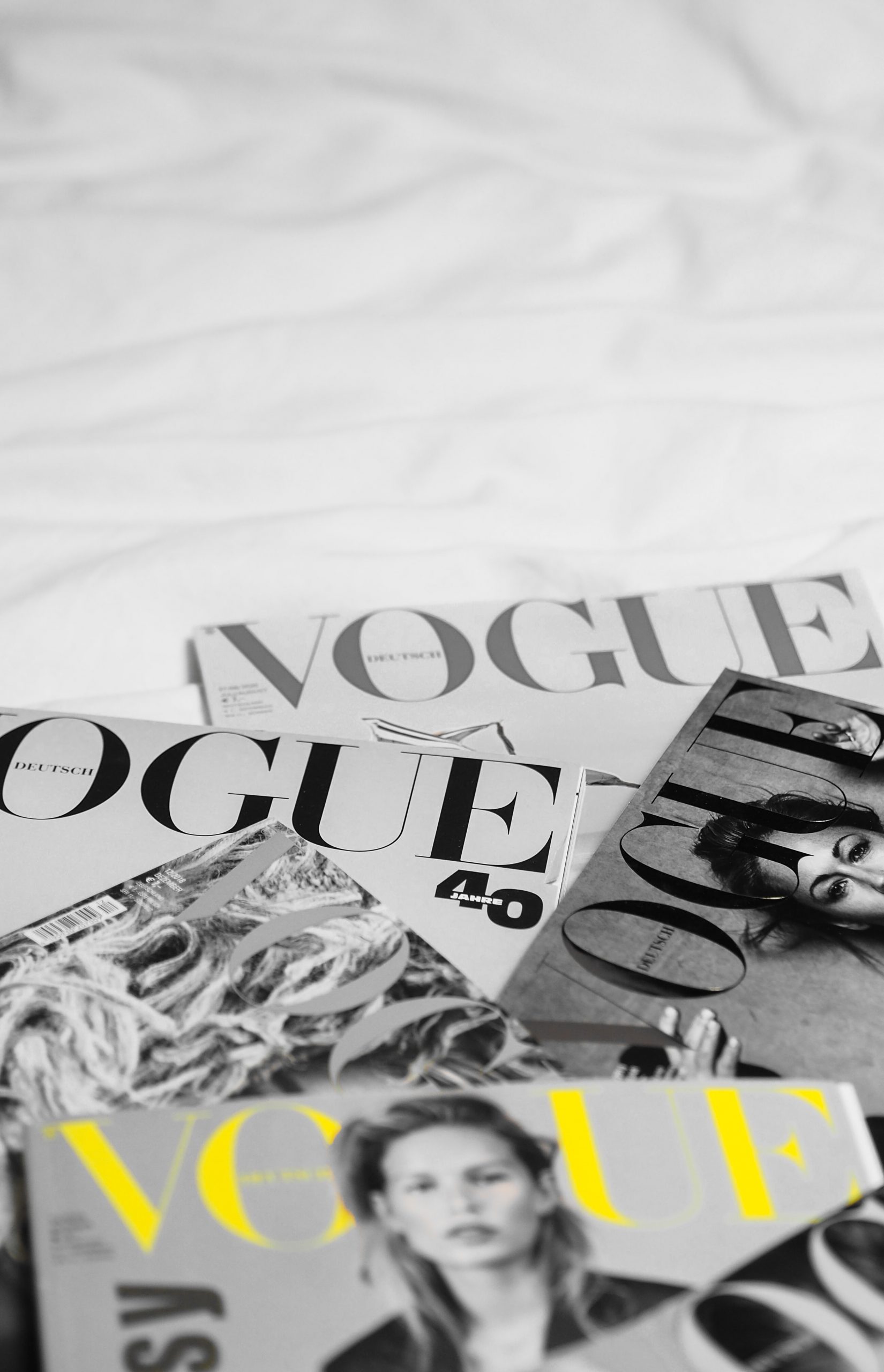Words by Kristie O’Connor
For over a century, those who were looking for the latest fashion, runway or lifestyle tips ran to Vogue Magazine. Founded in 1892 in New York City, Vogue USA was the first issue to launch, and is made popular today by celebrities and the designer couture that grace the magazine’s pages. For our generation, there is an incredibly famous name associated with Vogue, and that is editor-in-chief Anna Wintour.
Wintour’s transformation of the magazine included the incorporation of figures within popular culture, understanding that the public wanted to see celebrity fashion, beauty, and lifestyle. The inclusion of events like the Met Gala, (Wintour is a board member for the Metropolitan Museum of Art), having association and loyalty to Vogue, continues to propel interest in the magazine especially for those interested in ÔÇÿfashion’s biggest night out’.
The first international launch after the original founding was British Vogue in 1916. American and British Vogue in the twenty-first century, arguably have the same priorities and production for their magazines. Their focal point being the world’s A-list celebrities, as well as understanding that this is what sells within the western world. Wintour and British Vogue’s editor-in-chief Edward Enniful both have long spanning careers within the fashion industry, especially with Vogue and its publisher Conde Nast. This could be why the two issues are often so similar.
With the introduction of other international Vogue’s, a question has been raised: Is Vogue falling out of Vogue? The concept of this magazine has always been high fashion, whether that’s displaying a daring new look on the cover or, predicting the future trends for the next season. It is becoming increasingly clear as the years go on that the international magazines, like Vogue Italia or Vogue Hong Kong, are taking these risks. Although they incorporate celebrities into their pages, it is produced in a way that the focus is still on the fashion. Whereas, American and British Vogue have become a lot more commercialised, they arguably still produce fashion filled pages, however, have a heavy focus on celebrity, and are not giving anything different within their covers.
Let’s look at some comparisons:
These two covers, (taken from Vogue Hong Kong November 2020 and British Vogue October 2021), feature the same celebrity, Zendaya, but are produced with completely different priorities in mind. For the British Vogue cover, the focus is Zendaya. Zendaya is a high-profile, A-list actress who is mostly well-known for being a Disney Channel alum, as well as featuring in films like Marvel’s Spider-Man trilogy and hit show Euphoria. She is a popular celebrity worldwide. Tabloid press is very popular within the UK, and with Zendaya’s face front and centre, Vogue are expecting people to buy their magazine to read her latest interview. There is no eccentric background or any other distraction, the sole focus is the celebrity.
However, Vogue Hong Kong, although also features Zendaya, is much different. Their portrayal of her represents so much more; an actual set and backdrop, with props contributing to and building a story for her cover. This makes the fashion so much more enjoyable. Her pose even, is a lot more candid with movement, drawing even more attention to the fashion that she so well embodies. There seems to be a lot more effort and creativity within this cover in comparison to British Vogue’s, hence why Vogue readers are becoming more interested in the international covers.
Another comparison:
Although both beautiful covers, (taken from Vogue Italia February 2020 and Vogue USA April 2021), Vogue Italia was the first to be called “the top fashion magazine in the world”. Their fashion can be daring and experimental, but it can also tone down the high fashion to display a message within their covers. This example includes ÔÇÿProtect Venice’ during its high tide emergency, urging people to donate to help. It is a refreshing and genuine cover, trying to raise awareness, drawing all attention to the stone plaque model Vittoria Ceretti is holding. I’ve never seen one of the more commercialised Vogue magazines do anything like this. I genuinely can’t remember the last time that American or British Vogue didn’t have a celebrity cover.
For American and British Vogue, there seems to be a heavy reliance on popular culture. With social media and the ability to follow celebrities’ lives, these more commercialised Vogue’s understand that their audience want what’s next. They want a beautiful cover of whoever is most famous at a particular time, with an interesting, juicy interview to match. There is almost no need for them to make their covers higher fashion because they understand what sells and what will keep their business running. International Vogue covers want to reflect exactly what Vogue is about: the fashion. Everything is high fashion, high quality and thoroughly thought out, with creativity, direction and meaning. We can see that within these comparisons. I don’t think Vogue is falling out of touch with their audiences, as the different countries expect different standards from their favourite fashion magazine. However, to all fashion enthusiasts, it is clear. American and British Vogue have lost that high fashion representation: experimental, new, fun and with depth, that Vogues like Italy and Hong Kong, have always represented.
Links to covers spoken about:
https://www.voguehk.com/en/article/fashion/zendaya-vogue-hong-kong-cover/
https://www.vogue.co.uk/news/article/british-vogue-october-2021-zendaya
https://archive.vogue.com/issue/20210401
https://www.vogue.it/moda/article/vogue-italia-febbraio-copertina-vittoria-ceretti-maty-fall



